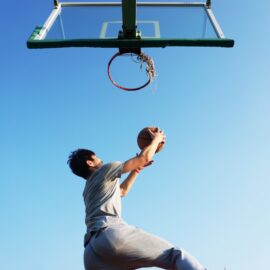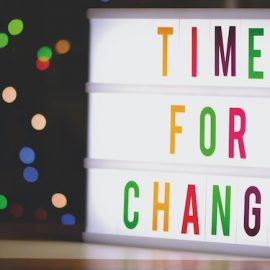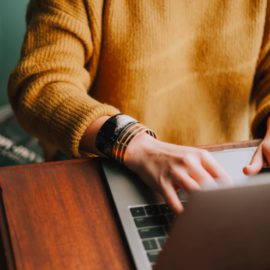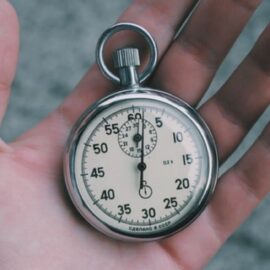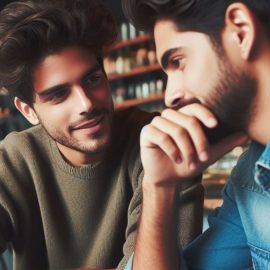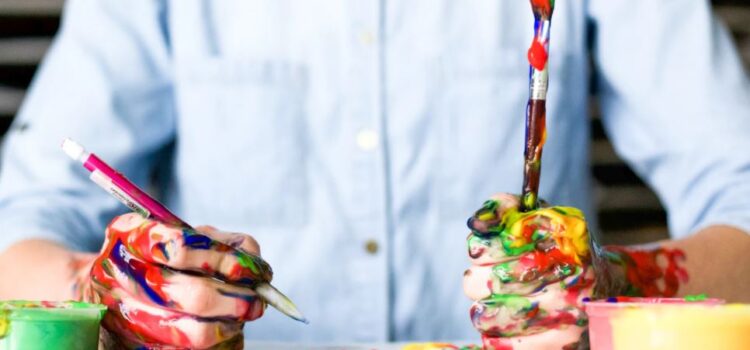
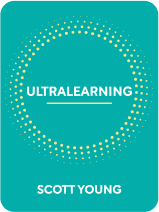
This article is an excerpt from the Shortform book guide to "Ultralearning" by Scott Young. Shortform has the world's best summaries and analyses of books you should be reading.
Like this article? Sign up for a free trial here .
What is active experimentation? How does experimentation lead to skill mastery? What is an experimentation mindset?
Active experimentation is when a person applies a concept in real life to see the result. This self-directed form of learning leads to personalized learning, efficiency, and originality. When you have an experimentation mindset, you believe in your capacity for growth, therefore you will grow.
Keep reading to learn about the benefits of active experimentation.
The Power of Active Experimentation
If you wish to go beyond proficiency and achieve mastery of a skill or topic, active experimentation is the best way to accomplish that. There is ample evidence that active experimentation unlocks mastery. Van Gogh was one of the most eccentric painters in history. Notable in his learning approach is a diverse set of self-directed, experimental methods, perspectives, and materials. Using so much variety, he was able to explore until he found his own unique style. Of further note was his intensive strategy for learning, obsessively producing countless paintings in spite of being criticized by others for lack of skill. This intensity supported him to overcome impediments in his environment and proficiency level, which allowed him to create the classic works he is so well known for today.
Van Gogh chose to address any skill or element he struggled with by intensively practicing it from as many angles as possible, resulting in hundreds of creations. Once he finished with one element, he’d start with a new one, understanding that he needed to catch up with the skills of other painters. This process not only made van Gogh into a skilled painter, but it also turned him into one of the most unique painters of his time. In addition to his intensive practice, he also absorbed as much learning as he could from peers, mentors, and fellow painters by incorporating ideas from each into his practice. This included techniques, tangible resources, ideologies, and philosophies. For example, he often cycled back and forth between bold styles of impressionism and older, more traditional approaches.
Further evidence of active experimentation’s value:
Evidence #1: Experimentation Leads to Personalized Learning
When you first learn something, follow in the footsteps of someone who has been learning it longer. This metalearning allows you to set yourself up for initial progress. But at a certain point, you will not be able to follow the examples of others and will need to determine your own learning style. This experimentation is inevitable because as you gain proficiency, there will be fewer people who have something to teach you, and you will naturally find your own unique path to mastery.
Two people who are new to learning something will have more in common than two people who have achieved mastery. Experts have their own unique priorities and styles. For example, Laszlo Polgar, the father of chess genius Judit Polgar, taught all three of his daughters well-enough that their skill eventually surpassed his. This forced each of them to develop their own motivation and focus for further growth, allowing them to define their own unique styles of play. Alternatively, consider child stars who grow up doing the same kinds of films and television shows (for example, Disney stars), and, as they get older, graduate from this basic style of acting, branch out, and begin selecting projects more personal to them.
Evidence #2: Experimentation Leads to Efficiency
When you first start learning something, your priority is gathering as much knowledge as possible. Once you’re proficient in a skill or subject, you may want to achieve mastery, in which case your focus will be refining your learning and practice process through active experimentation. This generally involves editing and modifying your strategies for achieving eventual mastery. This is essentially a process of “unlearning” ineffective strategies and almost always involves taking exploratory risks to determine new, better ways of solving problems. Newcomers know how to problem-solve, but masters know the most efficient way to problem-solve. This is because they have unlearned the least valuable information and learning methods. For example, a newcomer might successfully make it to the end of an obstacle course, but a master will make it to the end of the course in record time because they’ve practiced long enough to experiment and find the fastest route.
Evidence #3: Experimentation Leads to Originality
Proficiency is not the only important aspect of mastery. Originality is another marker, and originality requires creativity, which requires experimentation.
There are three main types of experimentation.
Type #1: Resources
This involves experimenting with materials, strategies, and other learning resources. Experimenting with different resources helps you to determine, not just the resources you can use to learn, but which resources work best for you personally. For example, if you’re learning to draw with pencil, you might take some time to experiment with charcoal or pen. The differences between the materials can lead to valuable learning insights.
The critical element here is setting boundaries around your exploration. Identify the resource you want to experiment with and give yourself a time constraint for intensive exploration. Once the time is up, analyze your experience and determine whether or not it’s valuable to continue experimenting. If not, pick a new resource to explore.
Type #2: Technique
Shift your technique from focusing on “How can I learn this?” to “What should I learn next?” Determine a subtopic or sub-skill and spend time intensively learning it, then analyze your results. For example, if you are learning how to box, and you want to develop more of your own style, you might experiment with intensively learning freestyle dancing or gymnastics, and then reviewing the impact of that study on your boxing.
Type #3: Style
There is no “right” style. All styles have their pros and cons. Evaluate your personal strengths and weaknesses and experiment with various styles to see which ones complement and which clash. Study those who are masters of what you are learning. They will all have their own style to what they do. Do your best to explore through replication or integration and pay attention to what fits for you. Some skills need to be conducted in a specific way, but others will vary. For example, writers with equal proficiency can write in many different styles. When you are proficient enough, you get to choose your unique expression of that proficiency.
The Experimentation Mindset
When you have an experimentation mindset, you have an implicit belief in your capacity for growth. When you have a growth mindset, you see an expandable capacity for improvement. There are significant parallels between the experimentation mindset and growth mindset. If you don’t believe in the possibility of growth, you have a fixed mindset, which is the polar opposite of a growth mindset. You cannot experiment when you have a fixed mindset because experimentation requires a growth mindset.The growth mindset supplies the self-confidence you need to learn, while the experimentation mindset supports your active pursuit of learning.
Bottom line: If you believe you have a capacity for growth, and you pursue growth, you will experience growth.
Use the following avenues to explore experimentation.
Avenue #1: Replicate
Replication gives you a place to start as you seek to expand and helps narrow down further avenues of exploration. For example, van Gogh once knew so little about painting that it was most beneficial for him to learn and explore by copying the methods or styles of other artists. Once he gathered enough information this way, he was able to narrow down the twists and turns on his learning path.
Beyond that, replication allows you to study how an approach actually works. This gives you insights into why a particular approach might be so effective for a peer learner and also helps you identify aspects of your skill or topic that hold less importance than you initially thought. For example, if you’re an aspiring actress, make a list of the actresses you admire and practice with material from their filmography. In doing this, you learn which genres to specialize in (perhaps you’re better at comedy than drama or have a knack for historical pieces).
Avenue #2: Compare
Try two different approaches and vary a single component between the two. This will give you immediate information about the impact of that component, and consequently, which approach is best for you to use.
The core advantages are twofold.
- Testing one factor in multiple ways improves efficiency.
- Trying to solve a problem in a variety of ways expands your level of experience and supports you to step outside your comfort zone.
Avenue #3: Constrain
Constraints force you to move outside your comfort zone to learn in new ways, and this enhances your proficiency. Once you’ve gained knowledge, the pitfall is thinking you know more than you do. Fight against this by giving yourself new rules that require you to come up with new ways to learn.
For example, if you’ve reached proficiency in a new language, but you’ve been practicing with bilingual mentors, give yourself a constraint by practicing with speakers who do not speak your native language.
Avenue #4: Diversify
Select an additional skill to practice that is seemingly unrelated to a skill you’ve already defined or mastered. Proficiency in both skills can give you a competitive advantage. For example, if you’re a nurse, you might take up painting. You may not be a master at either, but you will open yourself up to niche opportunities that might not have otherwise been available. For example, maybe you are the perfect person for a new job combining healthcare and art.
It’s possible it will take multiple learning projects for diversification to become valuable. The more projects you complete, the better you will understand how various skillsets can influence one another.
Avenue #5: Explore
Because there are so many skills and topics with aspects that can be used in bold ways, doing so deliberately gets you thinking outside the box (where creativity thrives). Get out of your comfort zone by deliberately exploring the extremes of your chosen skills or topics. It may be tempting to explore in comfortable ways or at a scale that feels safe, but operating like this can limit your understanding of what is possible for your growth. The more complex the layers in a skill, the more likely it is that you can push those aspects to an extreme. For example, if you’re learning to paint, explore color by trying out bold shades or unusual color combinations, allowing you to push the boundaries of the materials available to you. Even if you end up retreating back to moderation, you will have gained experience and expanded your awareness of your learning capacities.
Learning is an uncertain process. If you stay stuck in comfortable, predictable routines, you don’t experience the discomfort you need to grow. Experimentation runs through all nine ultralearning principles because it forces you to put yourself in unfamiliar environments, dig deep to solve problems as they arise, and discover the best possible methods for your learning.

———End of Preview———
Like what you just read? Read the rest of the world's best book summary and analysis of Scott Young's "Ultralearning" at Shortform .
Here's what you'll find in our full Ultralearning summary :
- How a formal education doesn’t open the doors it once could
- The 9 core principles that can help you master any skill
- How to create a self-directed learning project to help you advance in your field

